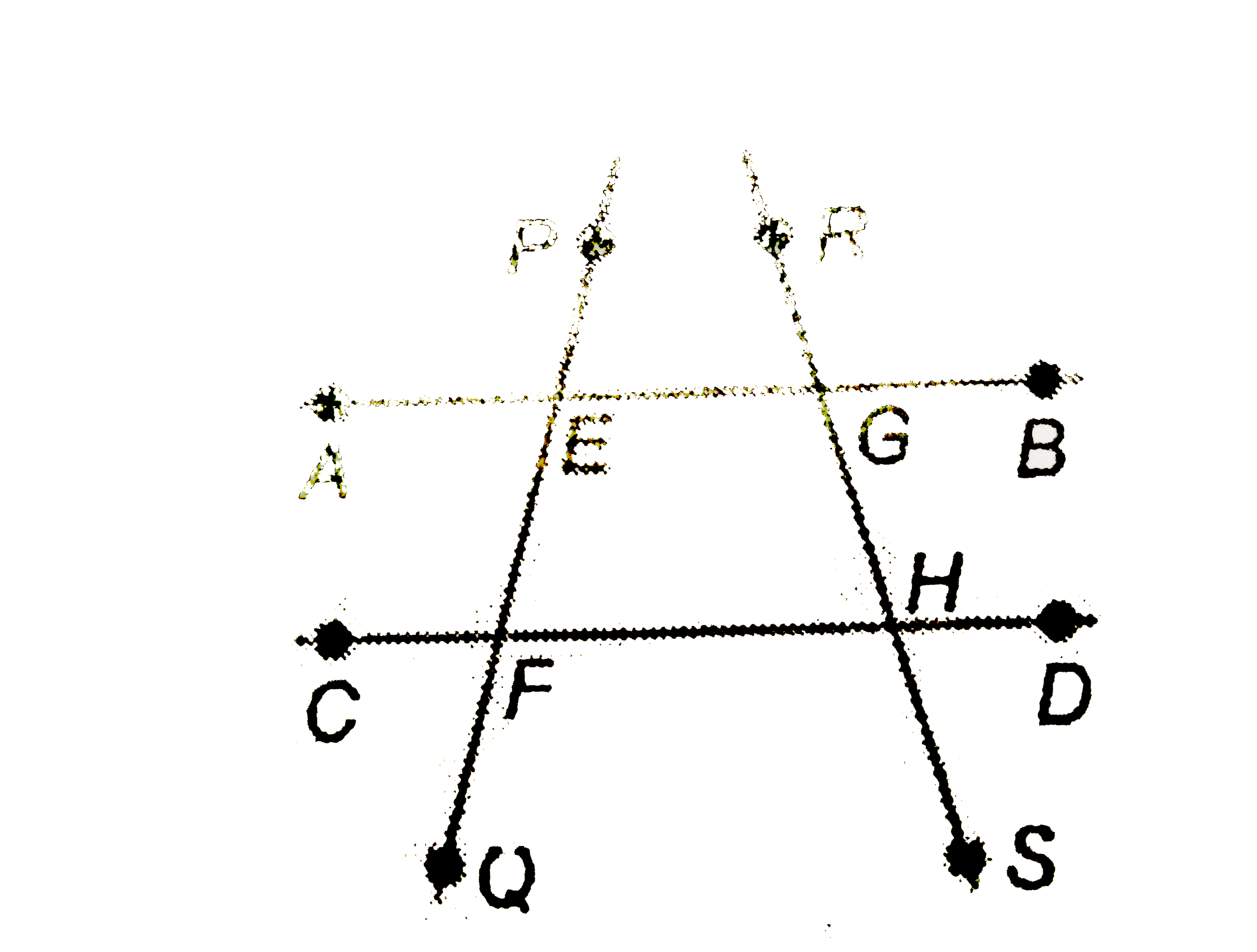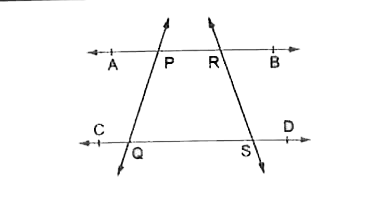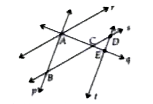Fill in the blanks.
(i) A right angle is (P)________ of a revolution.
(ii) A figure whose all sides are equal and all angles are (Q)_________is called regular closed figure.
(iii) A line dividing a line segment into two equal parts and perpendicular to it is (R)_____________of the line segment.
P Q ROne-fourthdifferentlength
P Q ROne-thirddifferentangle bisector
P Q ROne-fourthequalperpendicular bisector
P Q RHalfequalend point
The correct Answer is:C
Let's solve the fill-in-the-blanks step by step:
Step 1: Understanding the first blank
The first statement is: "A right angle is (P)________ of a revolution."
- A right angle measures 90 degrees.
- A full revolution is 360 degrees.
- To find out how many right angles fit into a full revolution, we divide 360 degrees by 90 degrees.
Calculation:
Number of right angles=36090=4
This means one right angle is one-fourth of a revolution.
Answer for (P): 1/4
Step 2: Understanding the second blank
The second statement is: "A figure whose all sides are equal and all angles are (Q)_________ is called a regular closed figure."
- A regular closed figure is defined as a polygon where all sides and all angles are equal.
- Therefore, the missing word should describe the angles in such a figure.
Answer for (Q): equal
Step 3: Understanding the third blank
The third statement is: "A line dividing a line segment into two equal parts and perpendicular to it is (R)_____________ of the line segment."
- A line that divides a line segment into two equal parts and is perpendicular to it is known as a perpendicular bisector.
Answer for (R): Perpendicular Bisector
Final Answers:
- (P) 1/4
- (Q) equal
- (R) Perpendicular Bisector
The first statement is: "A right angle is (P)________ of a revolution."
- A right angle measures 90 degrees.
- A full revolution is 360 degrees.
- To find out how many right angles fit into a full revolution, we divide 360 degrees by 90 degrees.
Number of right angles=36090=4
This means one right angle is one-fourth of a revolution.
The second statement is: "A figure whose all sides are equal and all angles are (Q)_________ is called a regular closed figure."
- A regular closed figure is defined as a polygon where all sides and all angles are equal.
- Therefore, the missing word should describe the angles in such a figure.
The third statement is: "A line dividing a line segment into two equal parts and perpendicular to it is (R)_____________ of the line segment."
- A line that divides a line segment into two equal parts and is perpendicular to it is known as a perpendicular bisector.
- (P) 1/4
- (Q) equal
- (R) Perpendicular Bisector
Topper's Solved these Questions
- BOOK - MTG IIT JEE FOUNDATIONCHAPTER - UNDERSTANDING ELEMENTARY SHAPES EXERCISE - EXERCISE - SUBJECTIVE PROBLEMS (INTEGER/NUMERICAL VALUE TYPE)10videos
UNDERSTANDING ELEMENTARY SHAPES
- BOOK - MTG IIT JEE FOUNDATIONCHAPTER - SYMMETRYEXERCISE - Olympiad/HOTS Corner13videos
SYMMETRY
- BOOK - MTG IIT JEE FOUNDATIONCHAPTER - WHOLE NUMBERS EXERCISE - OLYMPIAD/HOTS CORNER (FILL IN THE BLANKS)5videos
WHOLE NUMBERS
Similar Questions
Knowledge Check
- Question 1 - Select One
Points P, Q, R and S divide the line segment joining the points A(1, 2) and B(6, 7) in five equal parts. Find the coordinates of the point P.
AP(3, 4)BP(4, 5)CP(2, 3)DP(2, 1)
Fill in the blanks/tables with suitable information:
In the given figure, P divides the line segment AB in the ratio ____________
 View Solution
View SolutionIf length of side AB is 11.63 cm, then by dividing the line segment of length 11.6 cm in three equal parts, draw segment AB.
View SolutionIn the adjoining figure, name :
(i) four points
(ii) four line segments
(iii) four rays
(iv) four collincar points.
 View Solution
View SolutionPoints P, Q and R in that order are dividing a line segment joining A(1, 6) and B(5, -2), in four equal parts. Find the coordinates of P, Q and R.
View SolutionIn the adjoining figure, name
(i)four line segments
(ii)four rays ,
(iii) two non-intersecting line segments
 View Solution
View SolutionWhich of the following figures do not satisfy any of the following properties?
- All sides are equal.
- All angles are right angles.
- Opposite sides are parallel.
 View Solution
View SolutionAnswer the following questions.
(i) What kind of polygon is a eight sided figure with all the angles and sides are equal ?
(ii) What kind of polygon is a six sided figure with five sides equal and one unequal ?View Solution


